We Built a Volcano—and It Was Explosively Fun! The Ultimate Experiment Recipe Using Plaster and Baking Soda!
I’m Ken Kuwako, a science trainer. Every day is an experiment.
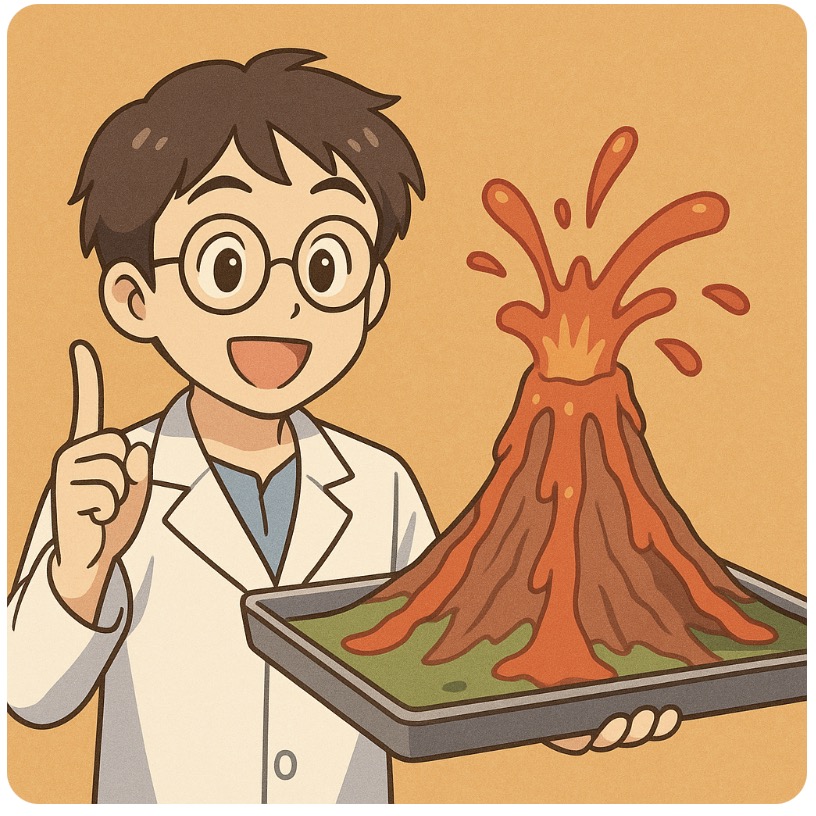
In a science class, the most fun part is always getting your hands dirty and “giving it a try.” There’s nothing more rewarding for us teachers than seeing the bright, sparkling eyes of our students and hearing them shout, “I get it!” Recently, I was teaching a class on volcanoes with H-sensei, a student teacher, and the volcano eruption experiment we did really sparked their curiosity.
“How does the viscosity of magma relate to the shape of a volcano?”
The real joy of science isn’t just memorizing facts from a textbook; it’s about “seeing, touching, and experiencing” it for yourself. So, we decided to build a volcano eruption model using common household materials. This experiment looks simple, but it’s surprisingly profound.
We used just four ingredients: plaster of Paris, baking soda, laundry starch, and water. By slightly changing the “mixing ratio” of these four simple materials, we could make the magma behave and flow completely differently. It was like we were simulating real volcanic activity.
The most exciting part is the chemical reaction that occurs when you combine plaster (CaSO4), baking soda (NaHCO3), and water. As you might already know, it generates carbon dioxide (CO2)! The volume of our mixture would gently expand as the gas was created, just like a real volcano slowly swells before an eruption. That moment of realizing how a simple chemical reaction can lead to a grand natural phenomenon is the true essence of science education.
H-sensei and I repeated the experiment over and over, changing the ratios until we found the perfect “recipe.” It took a lot of time, but the feeling of accomplishment when we finally got it right was incredible. It was a great reminder of what scientific inquiry is all about. In this report, I’ll share the details of the experiment, including the ratios we discovered through trial and error, and show you what the successful eruptions looked like!
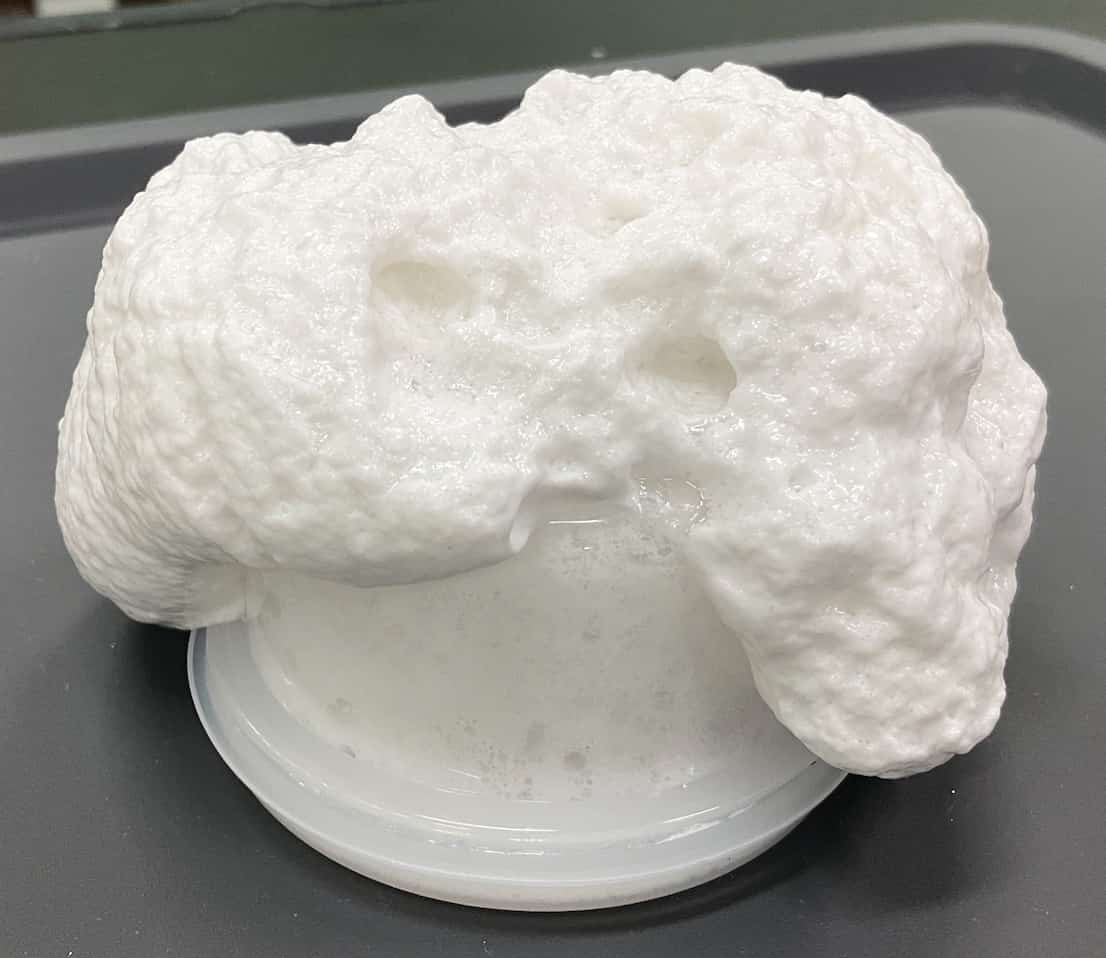
Materials
・Plastic containers
・Plaster of Paris, 10g x 2 ← Put into a resealable bag
・Baking soda, 5g x 2 ← Put into an evaporating dish
・Laundry starch (PVA)
・Water
・Spatula
・Glass stirring rod
・Tray
For the plastic containers, we used these from Daiso. The size is important, so if you’re trying this at home, be sure to get the same ones.
Daiso 70ml 4-pack, Round Mini Containers
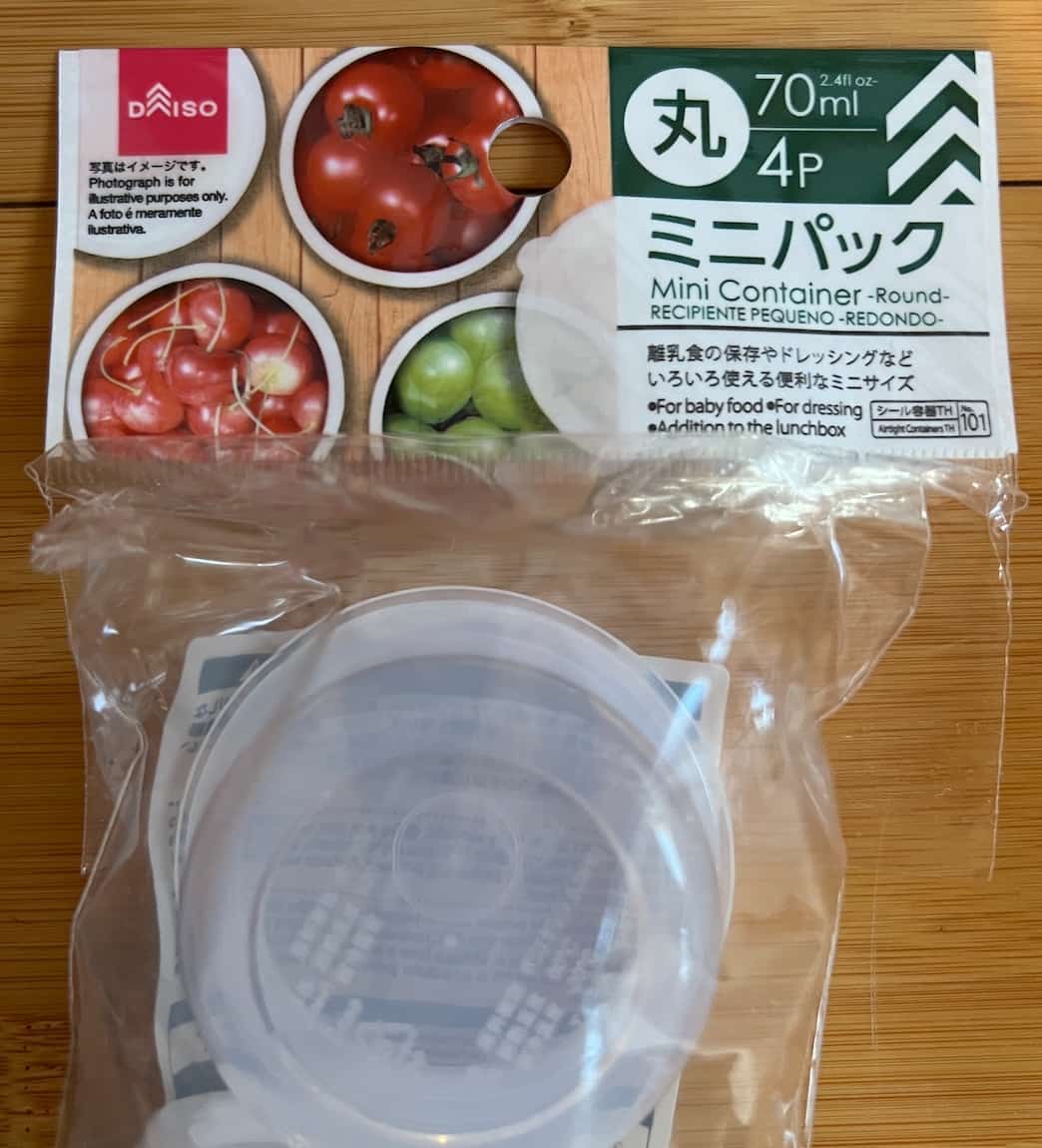
Use a drill to make a hole in the bottom of the plastic container and cover it with cloth tape beforehand.
Now for the all-important mixing ratios:
Low-viscosity magma type: 1ml PVA laundry starch + 30ml water
High-viscosity magma type: 10ml PVA laundry starch + 15ml water
Pour these mixtures into separate containers beforehand.
【Experiment Procedure】
① Thoroughly mix the PVA laundry starch and water in the plastic container with a glass rod.
② Add the 10g of plaster (from the resealable bag) to the plastic container.
③ Mix the plaster, PVA laundry starch, and water well with the glass rod until they are fully combined.
④ Once mixed, add the 5g of baking soda and quickly mix the entire solution with the glass rod.
The key here is to mix everything quickly and close the lid immediately.
If the baking soda is clumpy, crush it with a spatula beforehand!
⑤ Close the plastic container’s lid, flip it upside down onto the tray, and immediately peel off the tape.
⑥ Observe the spread of the solution (lava) from directly above the model.
Experimenters must wear polyethylene gloves! Everyone must also wear a lab coat and safety goggles!
We conducted this experiment for both the high-viscosity and low-viscosity solutions.
Here’s how it looked in action:
High-viscosity eruption
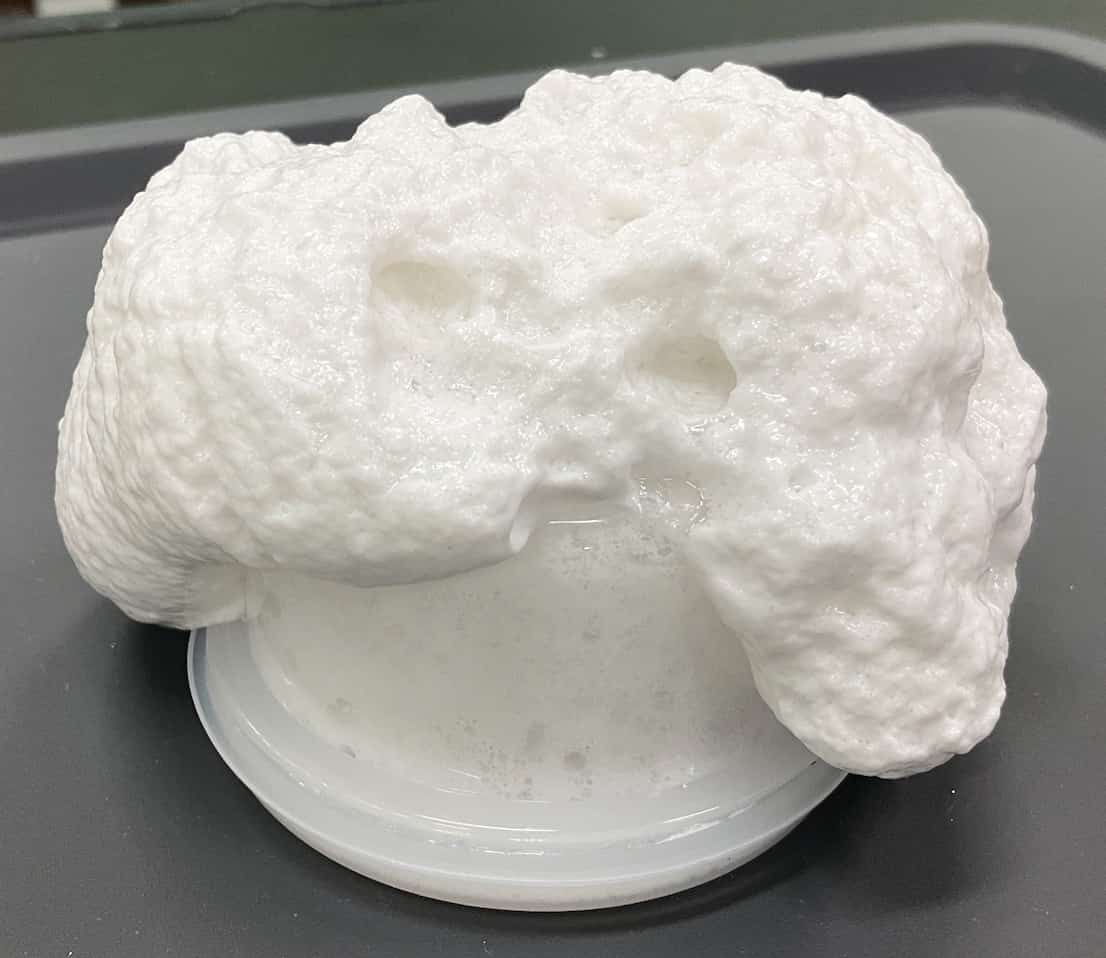
View from above:
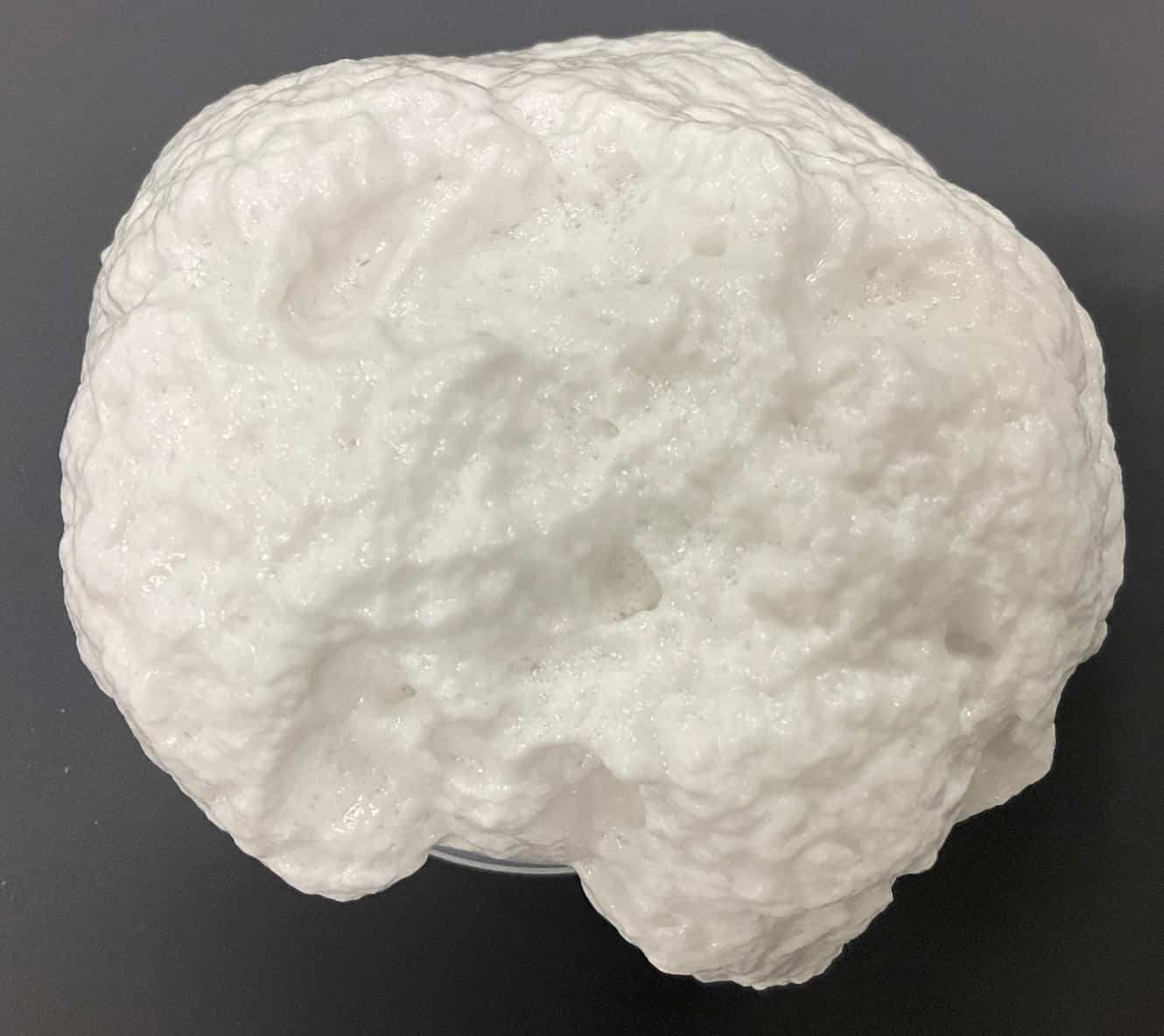
Low-viscosity eruption
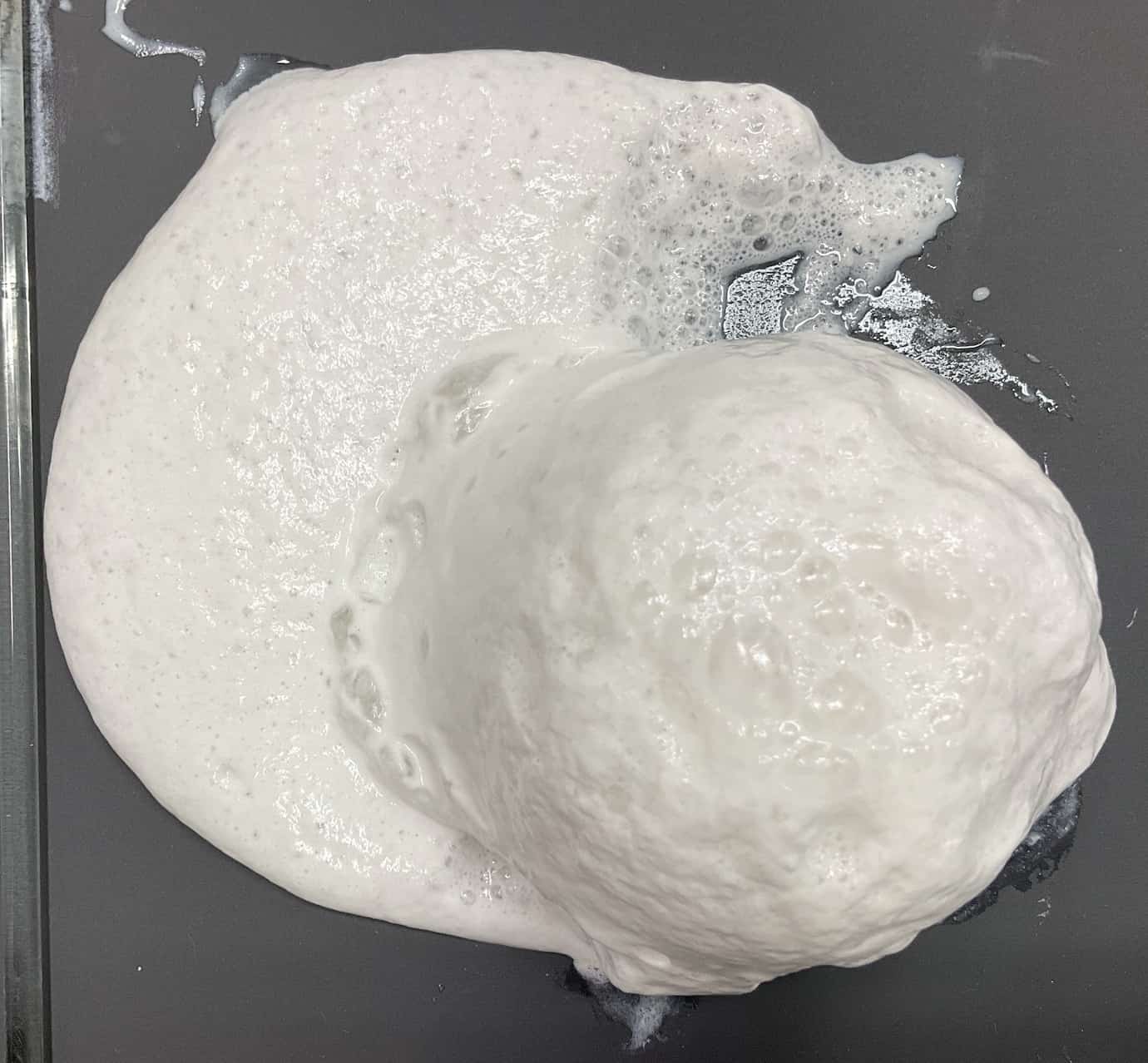
Thanks to H-sensei’s clever idea, we placed both eruptions on a black tray to compare them side-by-side.

We had four students work together on a single set of materials, and it was a huge success. The ratios were perfect! Thank you, H-sensei!
【Why Does This Mix Cause an Eruption?】
The key to this experiment lies in the chemical reaction between the plaster, baking soda, and water.
Carbon Dioxide Generation from Baking Soda: When baking soda (sodium bicarbonate: NaHCO3) dissolves in water, it partially decomposes into carbonate ions (CO32−) and bicarbonate ions (HCO3−), which then produce carbon dioxide (CO
2) and water.
Carbon Dioxide Generation from Plaster and Baking Soda: The calcium ions (Ca2+) from the dissolved plaster (CaSO
4) react with the bicarbonate ions (HCO3−) from the baking soda. This reaction creates a precipitate of calcium carbonate (CaCO3) and also generates carbon dioxide (CO2) and water.
The Role of Laundry Starch (PVA): The polyvinyl alcohol (PVA) in the laundry starch dissolves in the water, forming long, tangled molecules that create high viscosity. This PVA traps the carbon dioxide bubbles, preventing them from escaping all at once. This creates a “viscous eruption” that slowly swells and oozes out, mimicking a real volcanic eruption. With less PVA, the bubbles escape quickly, resulting in a runny, fluid eruption (like a Hawaiian shield volcano). With more PVA, the mixture becomes very sticky, leading to a dome-shaped mound (like a lava dome such as Shōwa-shinzan).
Through this experiment, students don’t just see how a volcano’s shape is formed. They also get to learn deeply about the underlying chemical reactions and physical properties of materials that influence a natural phenomenon like a volcanic eruption.
With a little creativity and some trial and error, this volcano eruption experiment is sure to be a captivating lesson that will ignite your students’ curiosity. Give it a try in your next class!
Contact & Requests
Bring the wonder and fun of science closer to you! I’ve put together easy-to-understand tips and fun science experiments you can do at home. Feel free to browse through the articles!
・About the author, Ken Kuwako: Click here
・For various requests (writing, lectures, experiment workshops, TV supervision/appearances, etc.): Click here
・Updates on new articles are available on X!
![]() Subscribe to my Science Channel for experiment videos!
Subscribe to my Science Channel for experiment videos!


